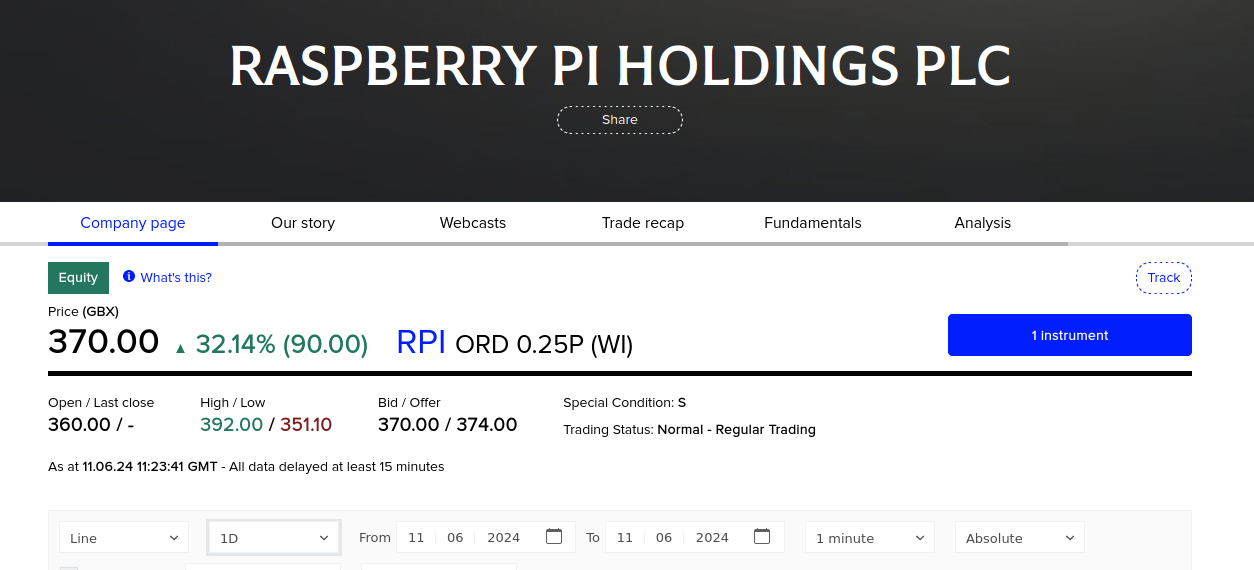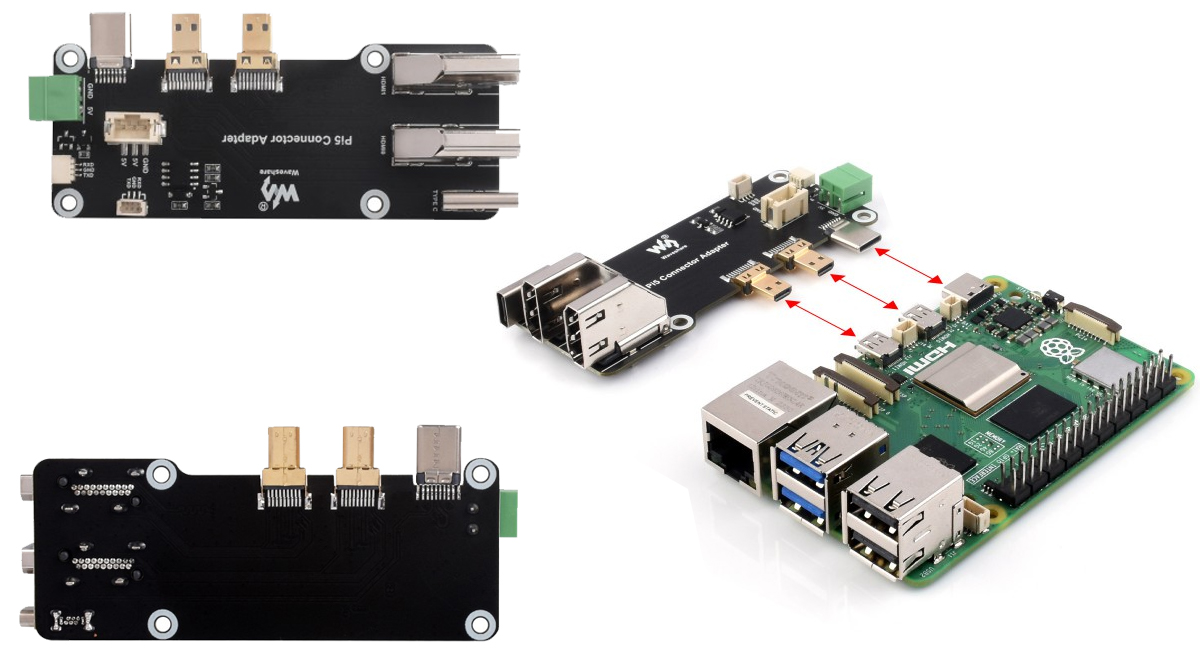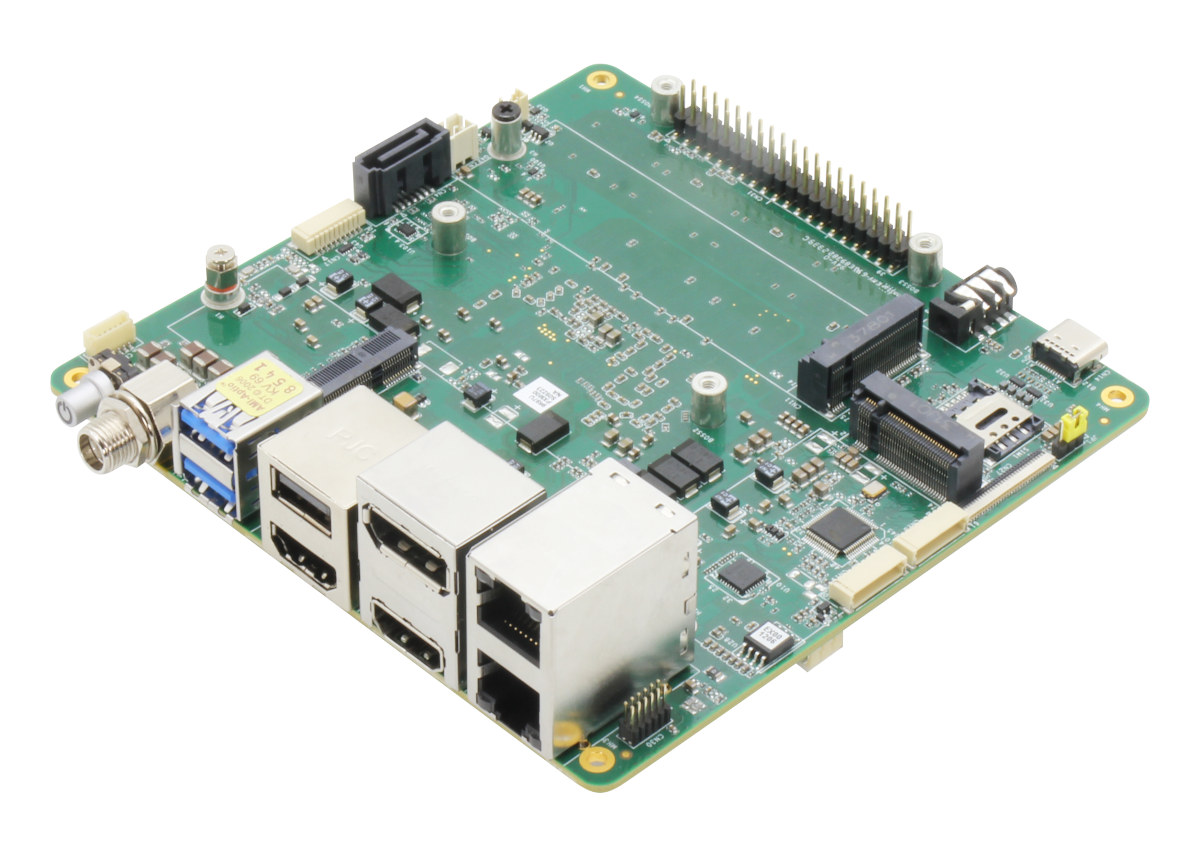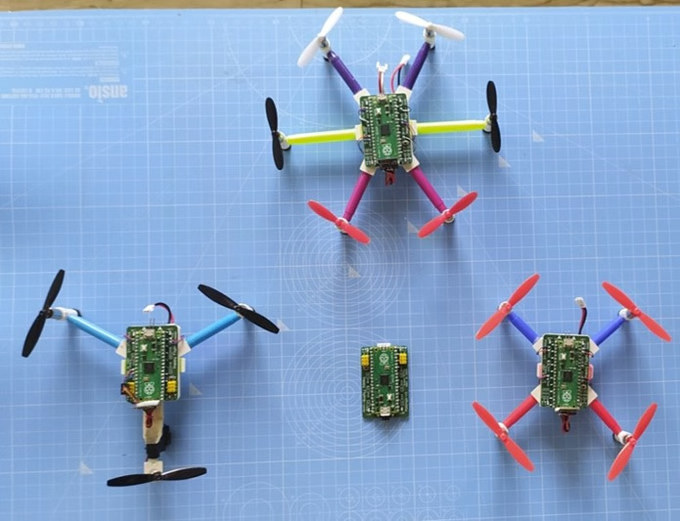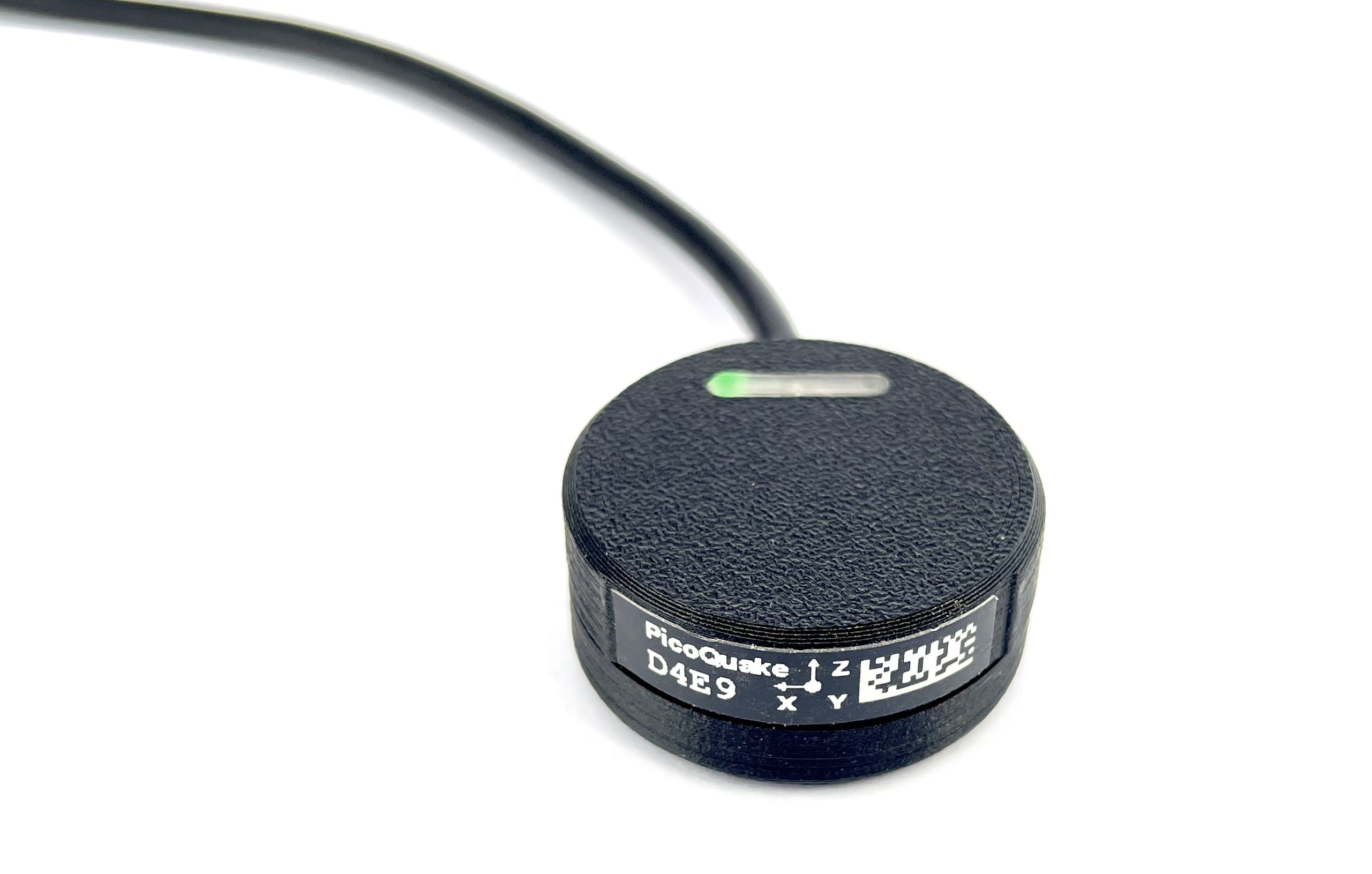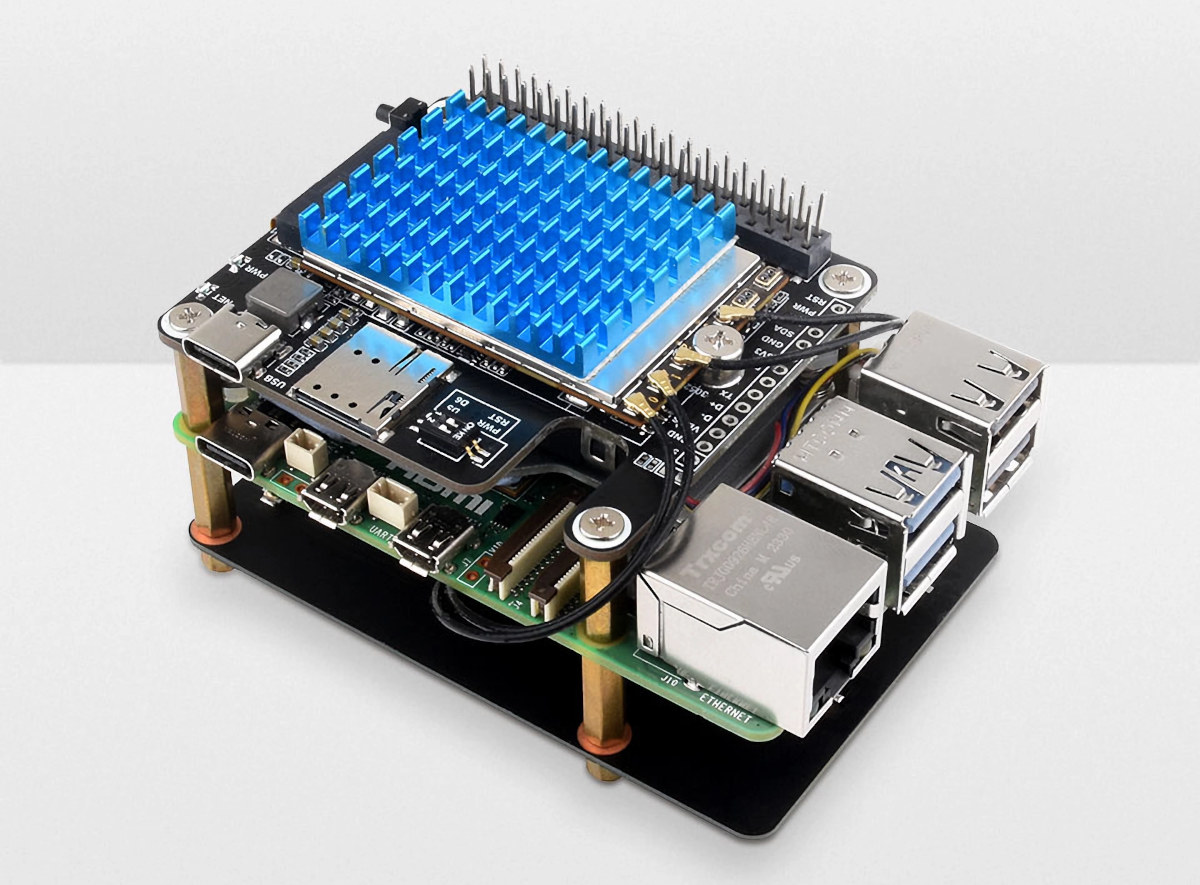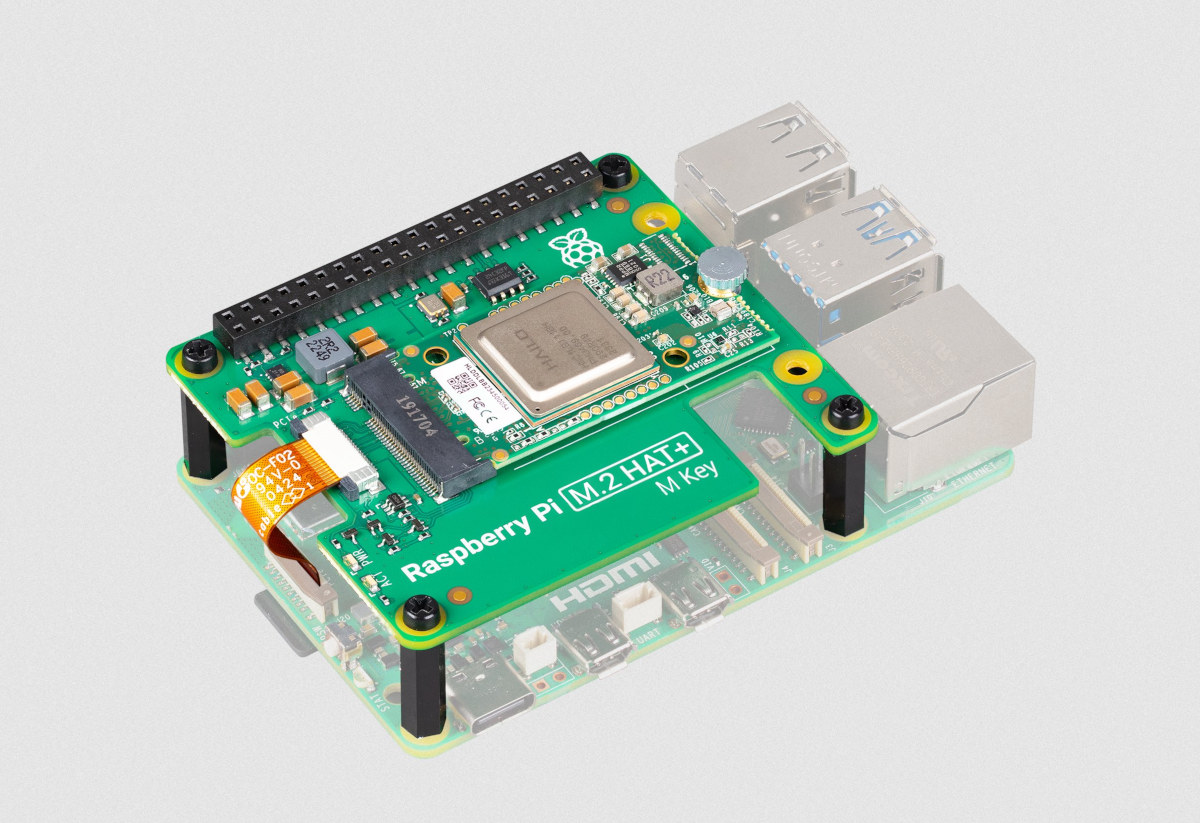You may soon be greeted by a chart when searching for the stock of Raspberry Pi boards simply because Raspberry Pi Holdings Plc is now a public company listed on the London Stock Exchange (LSE) under the ticker RPI. The Raspberry Pi Foundation was founded in 2008 as a non-profit organization with Eben and Liz Upton (and others) taking a gamble manufacturing a few thousand Raspberry Pi model B boards for $35 apiece for the February 2012 launch. But things got quickly out of hand, and the unexpected success of the board meant Raspberry Pi Trading (then changed to Raspberry Pi Limited) for-profit had to be established to handle sales and retribute most of the profits to the non-profit entity. After having sold over 60 million Raspberry Pi boards, Raspberry Pi Limited is no more, following the listing of Raspberry Pi Holdings Plc. Since the company is now public, there’s […]
Dual Micro HDMI to HDMI adapter supports Raspberry Pi 5/4B, offers multiple power options
Waveshare Pi5 Connector Adapter is a compact dual Micro HDMI to HDMI adapter for the Raspberry Pi 5 or Pi 4B that connects to the micro HDMI and USB-C ports simultaneously and provides access to two full-sized HDMI ports. The PCB also features a USB-C port and a screw terminal for power. Previously, we have written about many unique waveshare products, including Waveshare 2-CH CAN MiniPCIe, the Waveshare UGV Rover, the Waveshare ESP32-C6-Pico and Pico-M boards and many others, feel free to check those out if you are interested in the topic. Waveshare Micro HDMI to HDMI adapter specifications Supported Pi – Raspberry Pi 5 / Pi 4B Display Interfaces 2x micro-HDMI inputs 2x HDMI outputs Misc – 2x 3-pin UART connectors Power Power input 1x USB-C female port (Power In) 5 mm box-type screw terminal JST connector for battery Power Output – 1x USB-C male port (Power out) Dimensions […]
UP Xtreme i14 SBC offers Intel Core Ultra 5/7 Meteor Lake SoC, up to 64GB LPDDR5 for robotics and AIoT applications
AAEON has launched the UP Xtreme i14 SBC based on a choice of Intel Core Ultra 5/7 Meteor Lake SoCs, up to 64GB LPDDR5, M.2 PCIe sockets and a SATA port for storage, 2.5GbE and GbE interfaces, four 8K capable video output ports (HDMI, DP, and USB-C), a MIPI CSI camera interface, and more. The 14th Intel Core Ultra 5/7 SoC features up to 16 cores, Intel Arc graphics, and an Intel AI Boost NPU that deliver up to 32 TOPS combined and make the UP Xtreme i14 board especially suitable for applications such as Autonomous Mobile Robots (AMR), Smart Retail, and AI-assisted healthcare imaging. UP Xtreme i14 specifications: Meteor Lake-H/U SoC (one of the other) Intel Core Ultra 7 165H 16-core (6P+8E+2LPE) processor @ 1.4 / 5.0 GHz with 24MB cache, Intel 8Xe LPG graphics @ 2.3 GHz, Intel AI Boost NPU; TDP: 28W Intel Core Ultra 7 155H […]
PiWings 2.0 is a tiny drone based on Raspberry Pi Pico and ESP8266 WiFi module (Crowdfunding)
SB Components’ PiWings 2.0 is a small drone combining a Raspberry Pi Pico with an ESP8266 WiFi module (ESP-12E) for wireless connectivity, and designed for STEM education and drone enthusiasts. The PiWings 2.0 board supports up to six motors and four servos, includes a 6-axis IMU for auto-leveling, and features I2C, SPI, UART, and GPIO expansion ports for custom sensor and/or actuator support. The drone itself is offered with three, four, or six rotors. PiWings 2.0 key features and specifications: Microcontroller board – Raspberry Pi Pico with Raspberry Pi RP2040 dual-core Cortex-M0+ microcontroller, 264KB SRAM Wireless module – ESP-12E (ESP8266) WiFi module for iBus support Motor Drivers – 6 channels (3A DC) Servo Motors – 4 channels USB – 1x micro USB port (on Raspberry Pi Pico) Expansion – I2C, SPI, UART, GPIO ports Sensor – On-board 6-axis IMU (MPU6050) for auto-leveling Misc – 4x RGB LEDs Power Supply 3V […]
PicoQuake USB vibration sensor is based on the RP2040 MCU and the ICM-42688-P vibration sensor
The PicoQuake is a USB vibration sensor with a MEMS accelerometer covering a wide range of vibrations. It is capable of capturing vibrations in the low-frequency range (tall buildings, bridges) to the high-frequency range (motors, industrial machinery). It can operate as a standalone device and connect to a computer via a USB cable. Furthermore, it is based on the Raspberry Pi RP2040 microcontroller and uses a low-noise MEMS inertial measurement unit, the TDK InvenSense ICM-42688-P, which combines a 3-axis gyroscope and a 3-axis accelerometer. The low-noise IMU sensor used enables the PicoQuake to profile vibrations of very low magnitude. The PicoQuake sensor is a product from Slovenian maker, PLab, just like the FOCn driver module we took a look at recently. Potential use cases for the PicoQuake include optimizing brushless DC motor vibrations (important in small mobility products such as electric bikes and scooters), tracking trackpad clicks, smart home automation, […]
PCIe to 5G HAT+ for Raspberry Pi 5 takes SIMCom and Quectel 5G modules
Waveshare PCIe to 5G/4G/3G HAT+ for Raspberry Pi 5 is a PCIe Gen 2 x1 to M.2 HAT+ designed to take 5G modules from SIMCom and Quectel and a Nano SIM card. The kit ships with a 4-in-1 PCB antenna, associated cables, a heatsink, a 4cm 16-pin PCIe FPC cable, a 40-pin female header, and a fixture set for mounting. We had previously written about the SixFab 5G HAT for the Raspberry Pi 5 with a Quectel RM502Q-AE M.2 module, but this specific kit still relies on the USB 3.0 interface. The Waveshare kit is the first 5G kit using the PCIe interface from the Raspberry Pi 5 interface and it is offered with Quectel RM502Q-AE, RM530N-GL, RM520N-GL, or SIMCom SIM8262E-M2, SIM8262A-M2 M.2 3042/3052 modules. Waveshare PCIe to 5G HAT+ specifications: M.2 Key B socket for 3042/3052 5G modules with PCIe interface 16-pin PCIe FPC connector directly connected to the […]
$70 Raspberry Pi AI Kit combines official M.2 HAT+ with Hailo-8L AI accelerator
Raspberry Pi Limited has just launched the “Raspberry Pi AI Kit” comprised of the official M.2 Key M HAT+ and a 13 TOPS Hailo-8L M.2 AI accelerator module and selling for $70 through distributors. We had seen Raspberry Pi showcase an AI camera at Embedded World 2024, so when I received an email from a representative about a “Raspberry Pi AI Kit” I thought it would be the announcement about the camera. Instead, it’s a kit comprised of existing parts with the most interesting aspects being the price and availability (hopefully) since Hailo-8/8L accelerators are mostly found in more expensive embedded/industrial solutions, and easier documentation to get started. Raspberry Pi AI Kit highlights: Supported SBC – Raspberry Pi 5 M.2 HAT+ with PCIe Gen2 x1 interfaces, M.2 Key M support, Hailo-8L AI accelerator with Up to 13 TOPS of performance M.2 2242 form factor Typical power consumption – 1.5W Thermal […]
SBC software news – Armbian 24.5.1, DietPi 9.4, and Otii server for the Raspberry Pi 4/5
There’s been some notable software news for single board computers (SBCs) in the last few weeks with the release of Armbian 24.5.1 Havier with a focus on stability and UX improvement, the release of DietPi 9.4 lightweight Debian distritions for SBCs, and Otii server, the software for Qoitech Arc power supply, meter, and DAQ, has been finally released for the Raspberry Pi 4/5. Armbian 24.5.1 Havier Armbian announced 24.5.1 Havier on May 25 with bug fixes and improvements as a point release, but also some new boards. Here are some of the highlights. New boards Orange Pi 5 Pro FriendlyElec CM3588 NAS board Radxa ROCK 5 ITX Radxa Zero 3E/3W Avaota A1 SBC SK-AM68 board tqma8mpxl board CSC Hinlink H6xk boards RK3588-based Cool Pi CM5 EVB Improve Khadas support Resolve Rockchip patch maintenance nightmare Add functionality to freeze git resources Improve support for Radxa Rock S 0 and test USB […]


